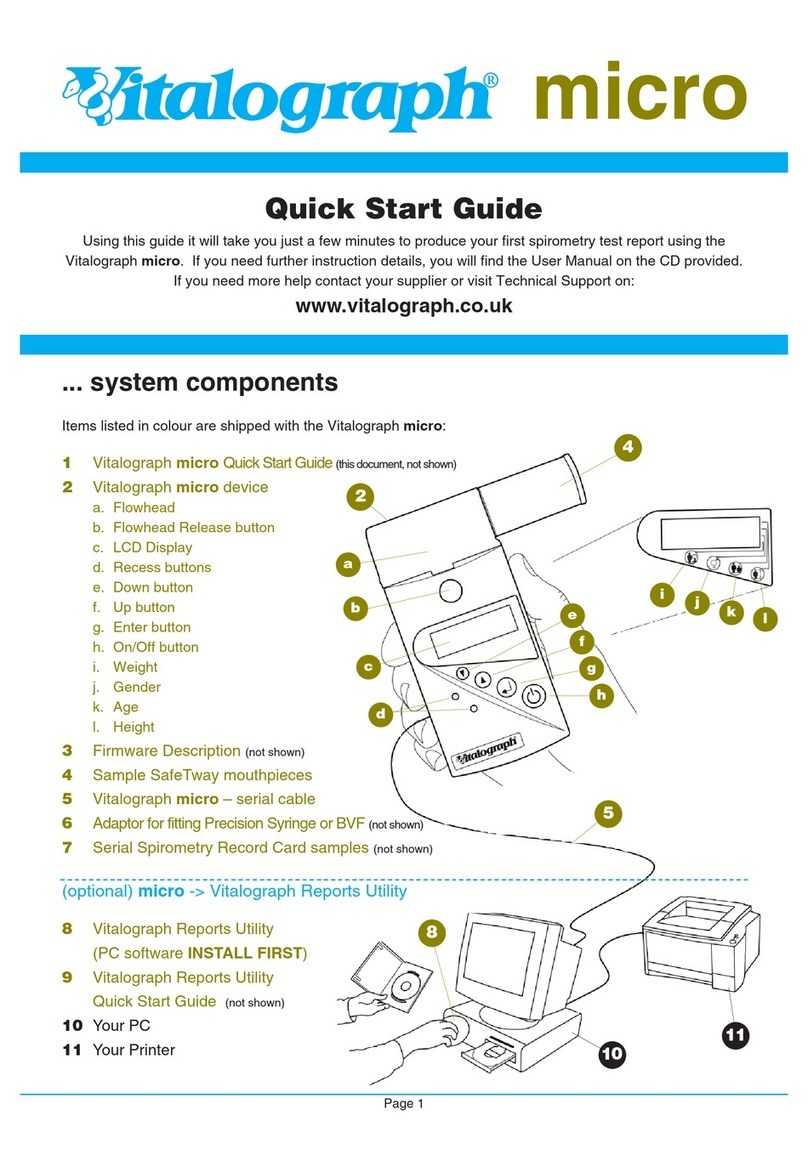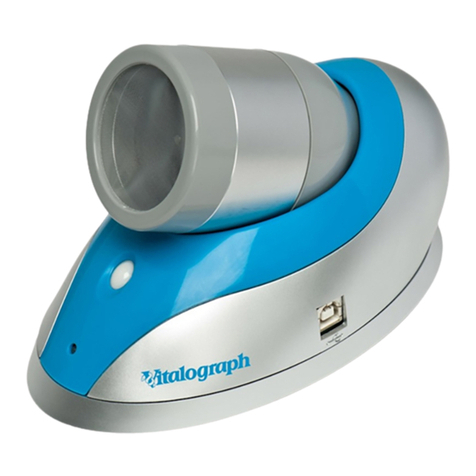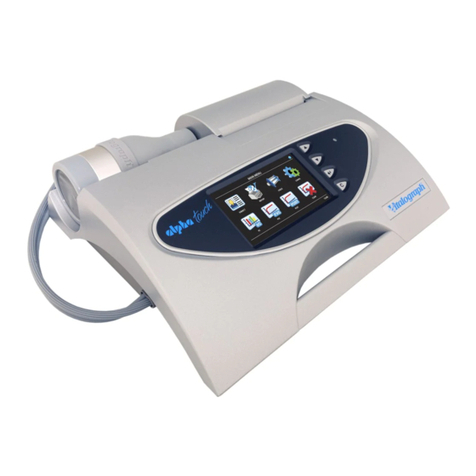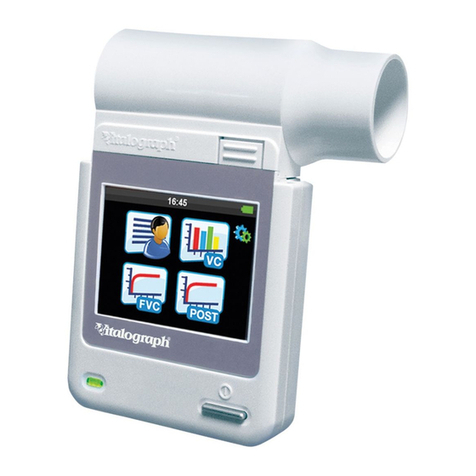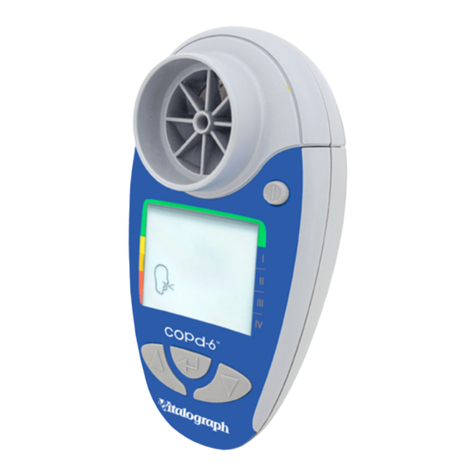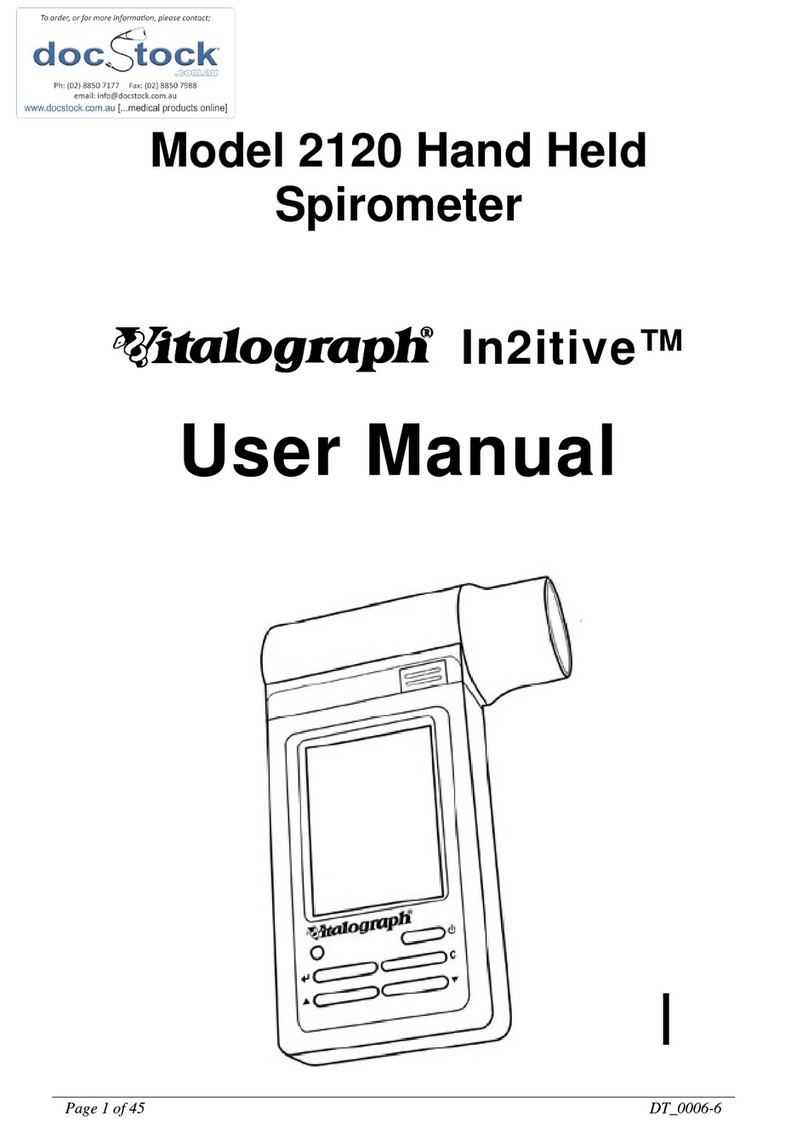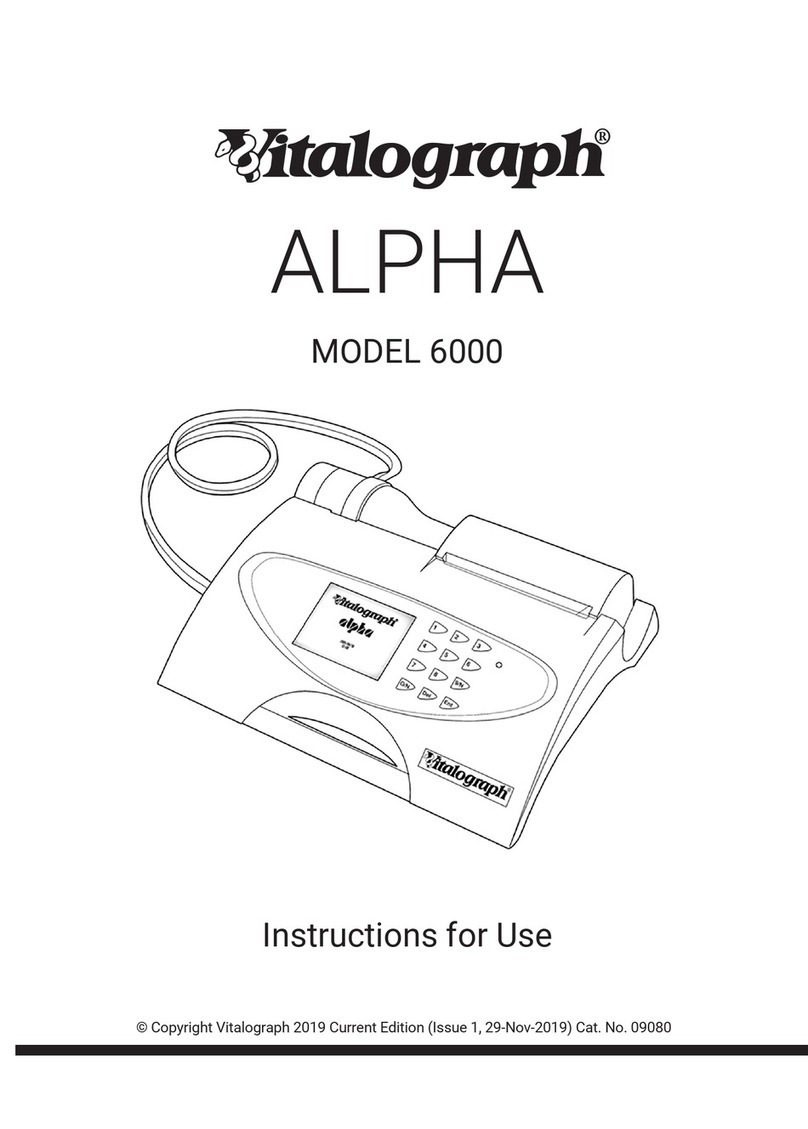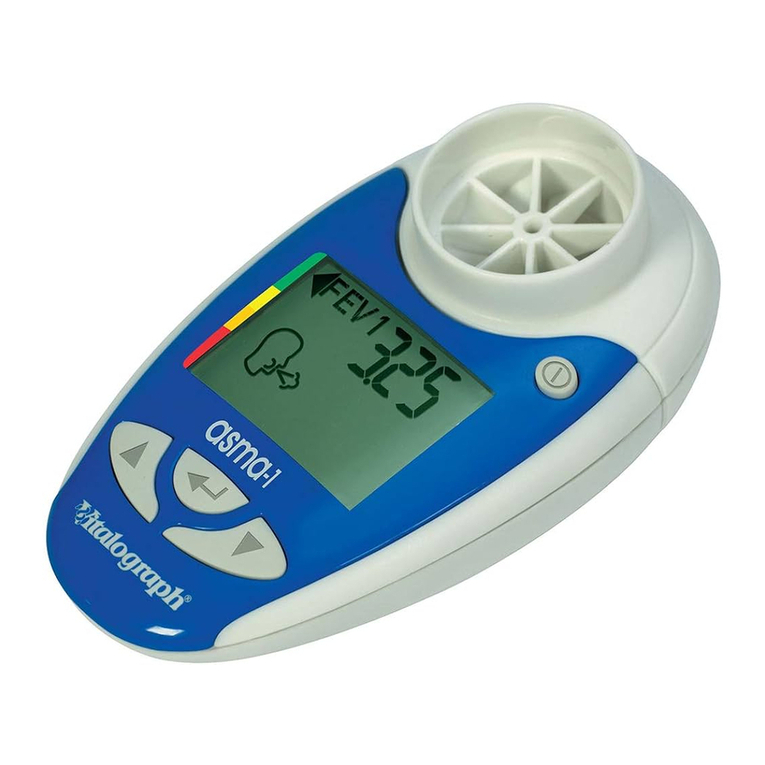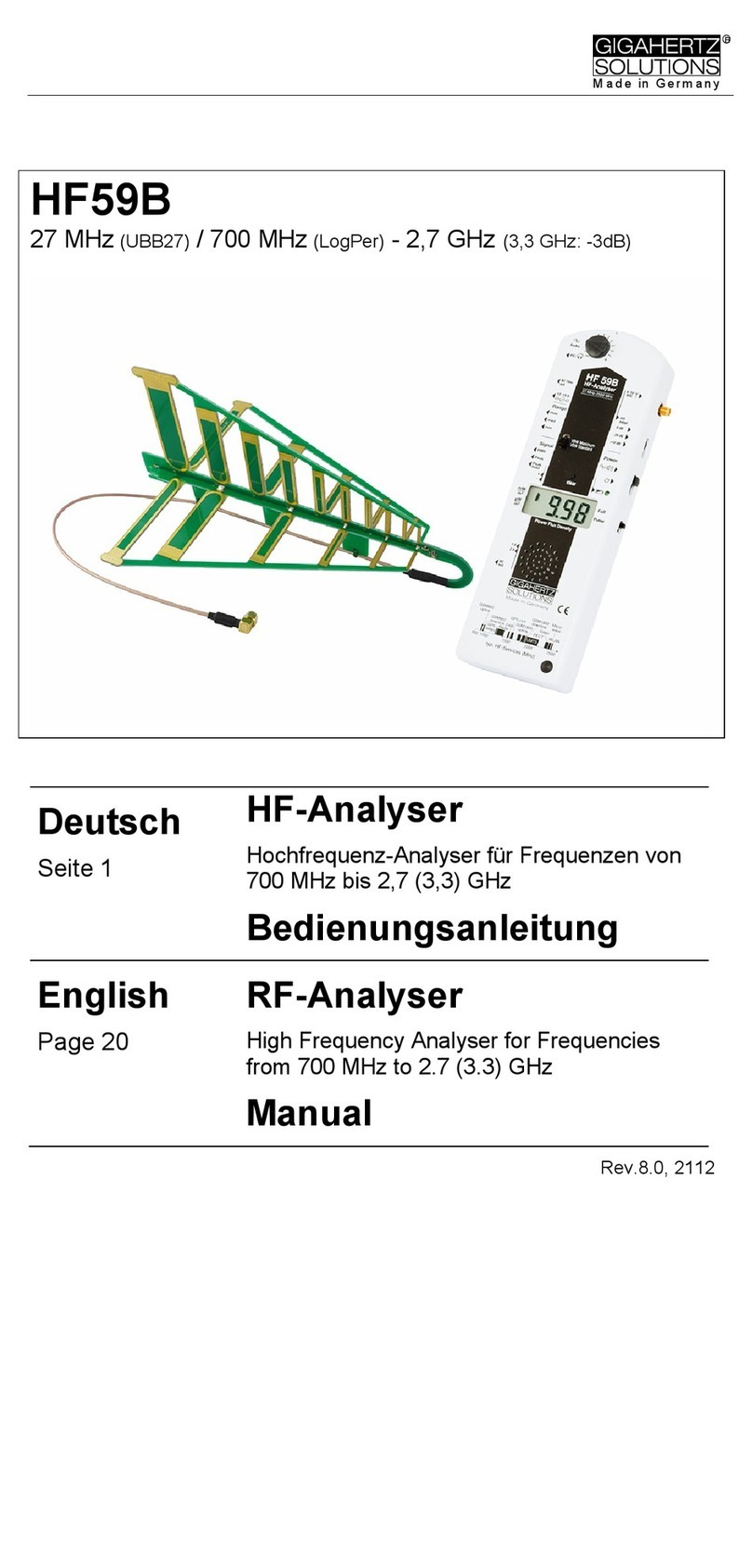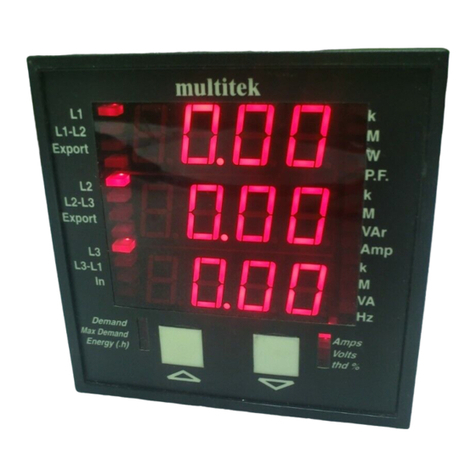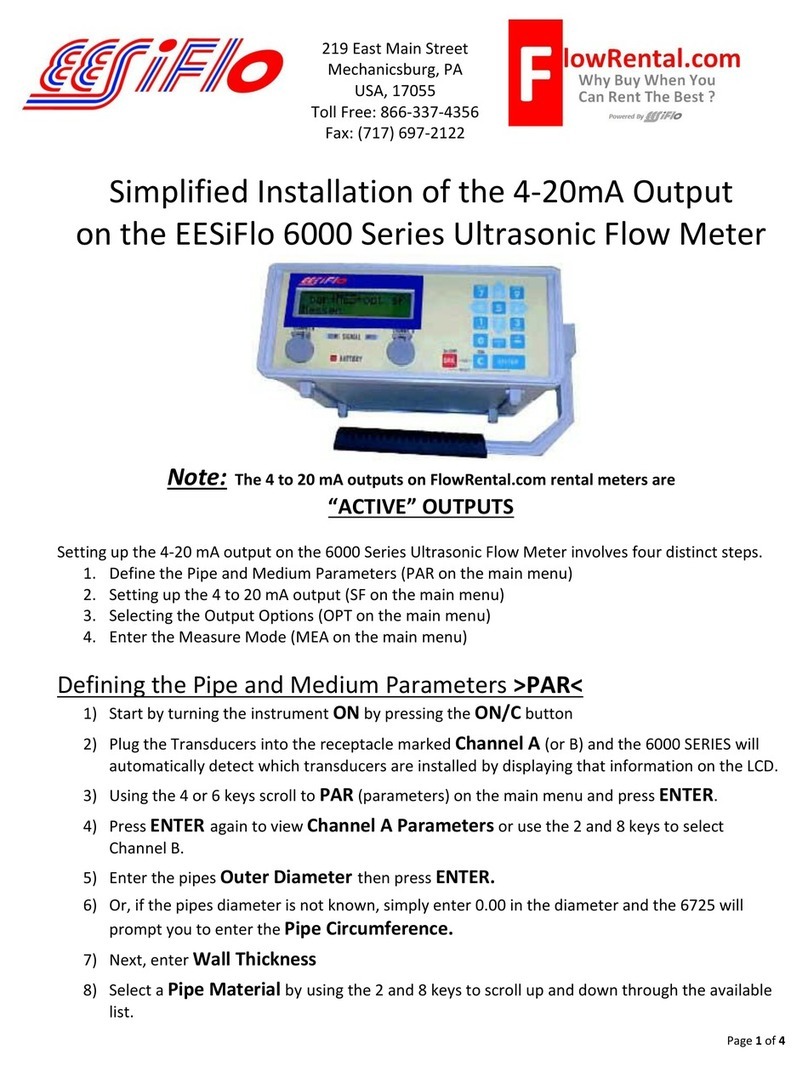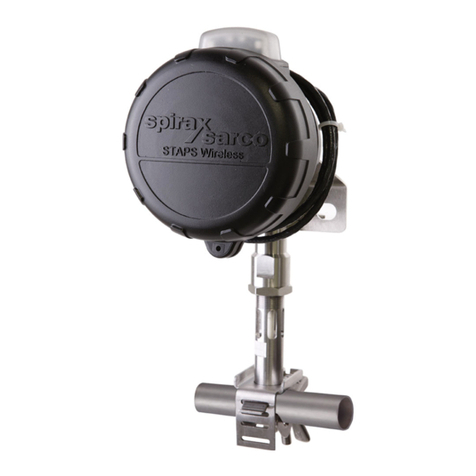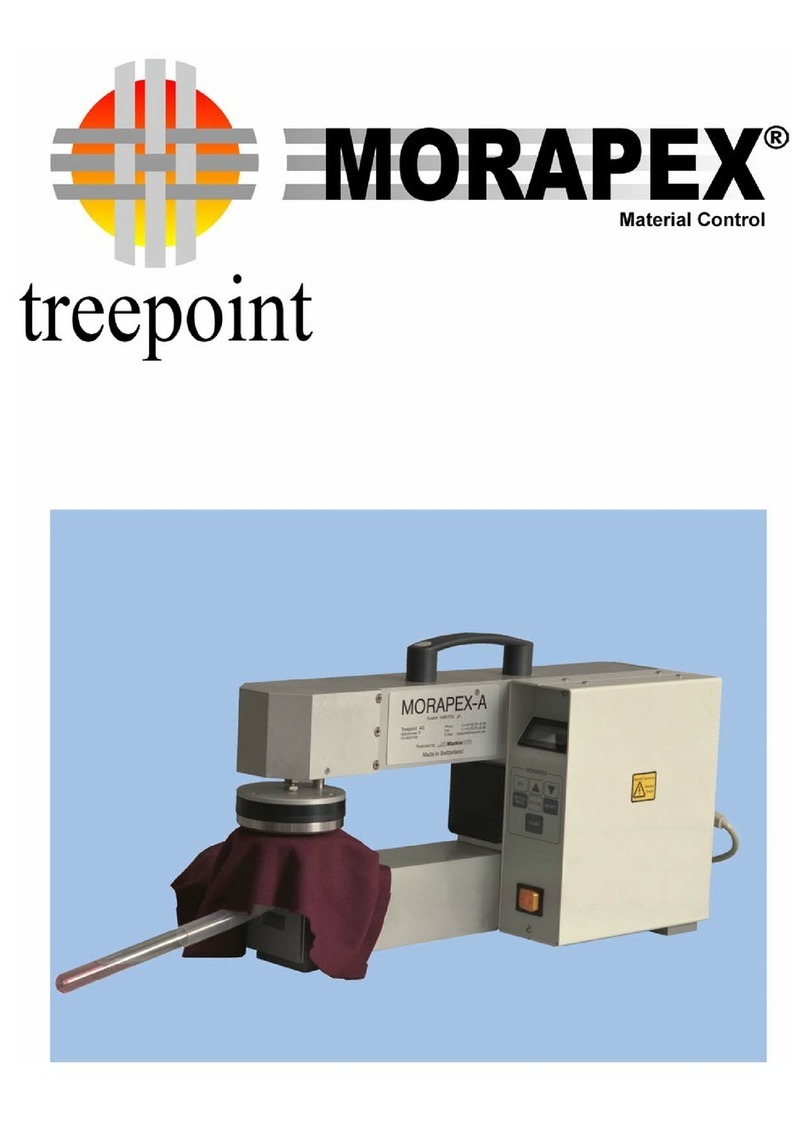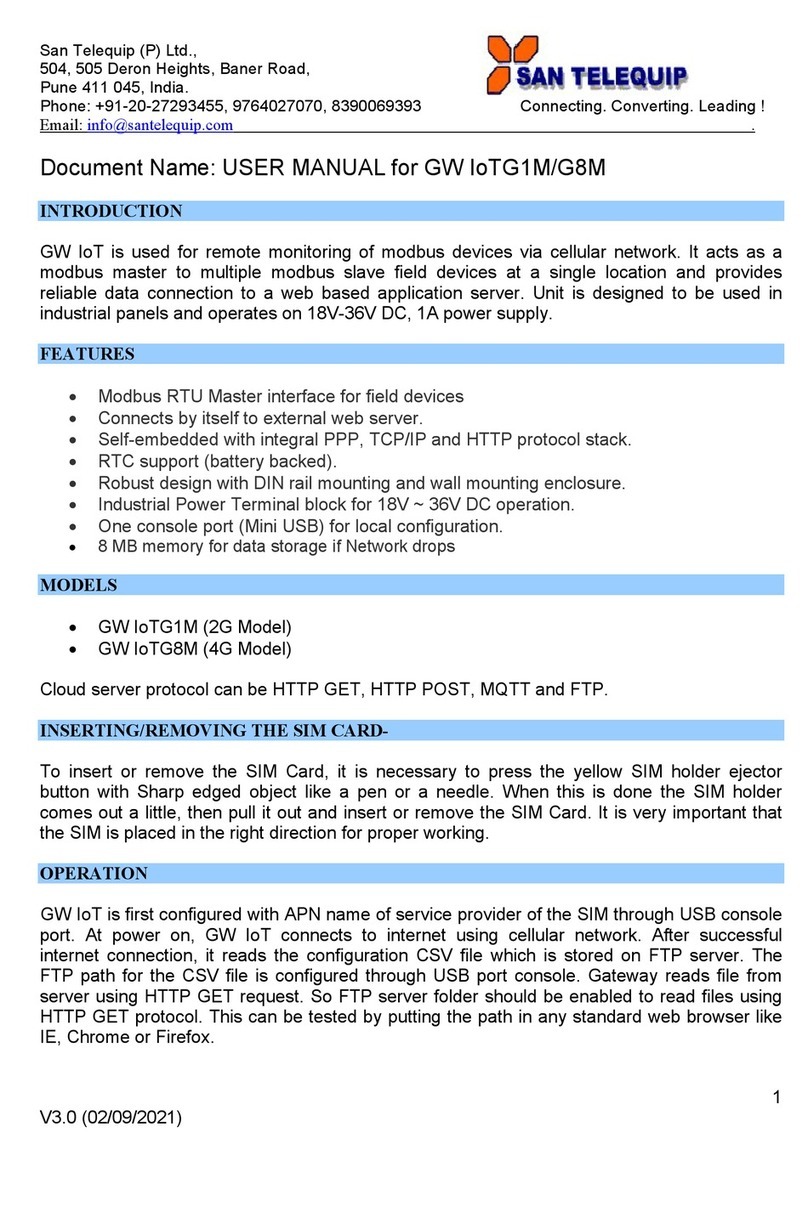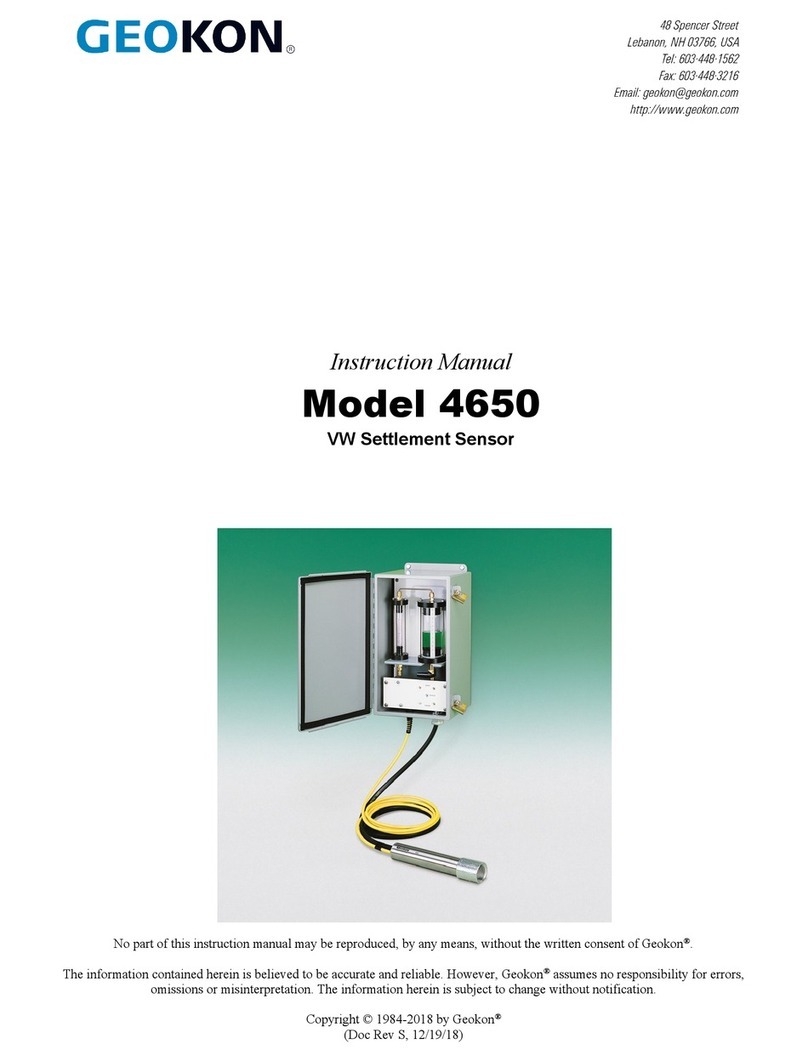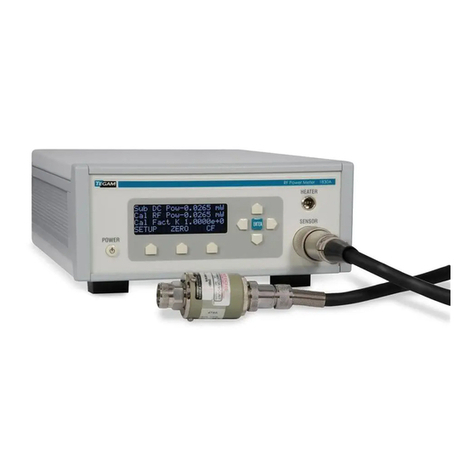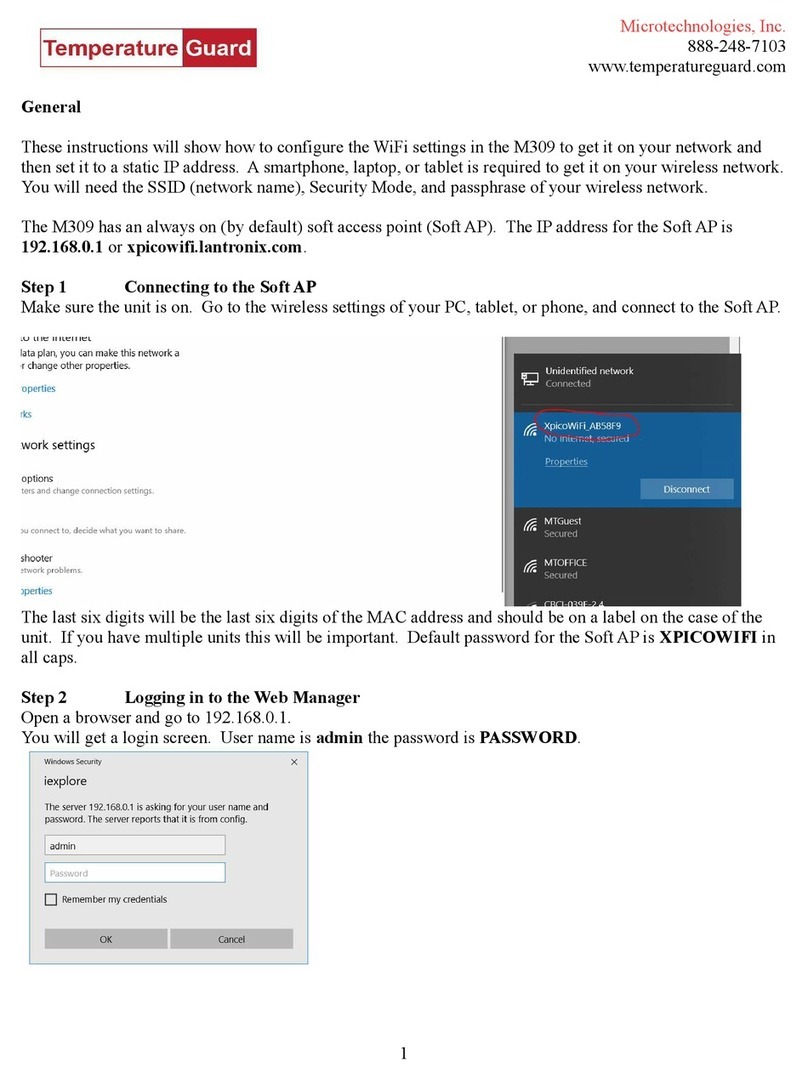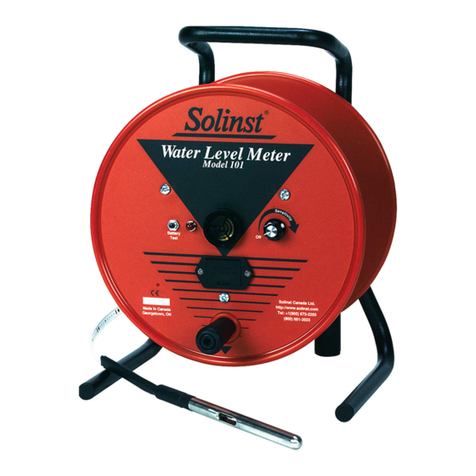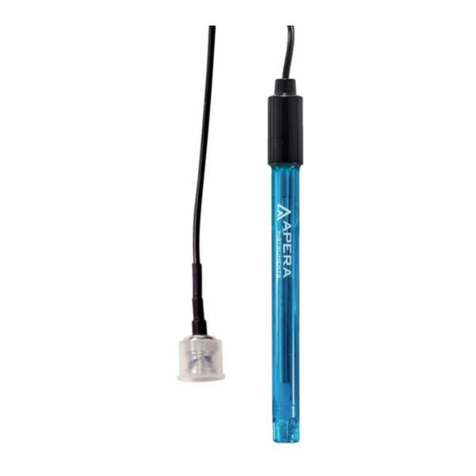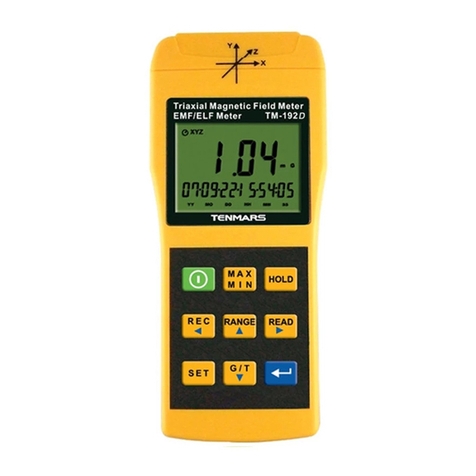
PEAK FLOW
METER
For the Self-Management
of your Asthma
Vitalograph
Designed to EN13826:2003
You and Your Asthma
Most people with asthma need to monitor (check) their asthma at least twice a
day and to have a plan of action to keep it under control. Measure your Peak Flow
before using your inhaler, working and on retiring at night.
This leaflet provides detailed information on your asmaPLAN+ peak flow
meter and how the self-management Action Plan works. To get the maximum
benefit from your peak flow meter, we recommend that you read this carefully.
Q. What is Peak Flow?
A. Peak flow is a measurement of how fast you can blow out. Your peak flow
score will be higher when you are well, and lower when your airways get
narrower. Peak flow scores are therefore a useful guide to the openness of your
airways at any given moment, and hence the severity of your asthma.
Although how you feel and what you can do are important, it is peak flow scores
which show accurately how your breathing is changing. Modern asthma
medicines aim to give you the best possible peak flow score. It is also important
to aim for stable peak flow. Stable means little difference between morning and
evening scores.
Q. Why do I need to measure my peak flow?
A. Many people over the ages of five will benefit from monitoring their asthma
with a peak flow meter. It will also help your doctor because peak flow scores
make it easier to see how well your asthma is controlled and when treatment
needs changing.
Q. How do I get an Action Plan?
A. Only your doctor can determine the best action plan for you. This is likely to
be preceded by an initial assessment followed by a diagnostic phase. During the
diagnostic phase you will need to record your Peak Flow scores. Your Action
Plan is assessed against your Peak Flow scores over several days. Your treatment
and/or the action plan may be changed following the diagnostic phase. This
procedure may be repeated until your optimum Management Plan is proven.
Use in Clinic
Use a disposable mouthpiece for each patient (SafeTway, Reorder No 20242
(200) or Mini SafeTway, Reorder No 20980). Perform Accuracy Check
Procedure at least annually. Record and certify with a calibration label attached to
the device.
Your Management Plan
Your doctor will decide on your action
plan, which depends on your
individual condition and
circumstances.
Only your doctor or specialist nurse
should complete your Action Plan
label or set the sliding colour zones.
The Action Plan may also be recorded
here:
Your measured Best Peak Flow
is......................................L/min
Your Best means the highest Peak
Flow when you are feeling well. This
is YOUR normal value.
Updating Your Management Plan
You should visit your doctor at least
twice a year to assess any changes in
your condition and change your plan if
required. If you find yourself in the
yellow zone most of the time, inform
your doctor.
Understanding Your
Management Plan
Your current management plan is written
onto a label like this which is then
attached to the back of your Peak Flow
Meter. Some models (asmaPLAN+)
have sliding zone markers or your doctor
may simply stick zone labels onto the
scale label.
In the green zone your asthma is well
controlled. Your doctor writes on the
label your regular preventative
treatment, such as 'preventer aerosol
morning & evening'.
The Peak Flow value in the box between
green and yellow zones is typically 80%
of your best.
Yellow means additional treatment such
as '2 puffs reliever every half hour'.
Between yellow and red, this box will
show your warning threshold value PEF
which is typically 50% of your best.
Red means medical alert. Your doctor
writes in a plan, e.g. 'take 1 steroid
tablet' or simply 'contact doctor'.
Emergency telephone number here.
The Diagnostic Phase
When your doctor first diagnoses your condition and as your disease improves or
worsens, recording your peak flow scores two or more times a day is required for
a week or longer. This is to ensure that the treatment you are following is
adequately keeping your peak flow score in the green zone.
If the diagnostic phase proves unsatisfactory your doctor will change your
treatment and start a new diagnostic phase.
After satisfactory scores and a management plan are established you will
probably no longer be asked to record your peak flow scores, but simply to follow
your Action Plan.
Care and Cleaning of your asmaPLAN+ Peak Flow Meter
Your asmaPLAN+ Peak Flow Meter should continue to give reliable
measurements for up to three years, after which time you should ask your doctor
for a new unit.
Avoid crushing the unit and keep it clean and dust free. If you suspect the unit is
damaged or is measuring incorrectly, contact your doctor immediately.
The outer surfaces should be thoroughly cleaned every week, more often if neces-
sary. We recommend the use of an alcohol wipe (IPA 70-90%), paying special
attention to the mouthpiece area.
NEVER ATTEMPT TO DISMANTLE THE UNIT. THIS CAN CAUSE
FAULTY PEAK FLOW SCORES
Caution: Federal Law (USA) restricts this device to sale by, or on the order
of, a physician.
Warranty
Your asmaPLAN+ Peak Flow Meter is guaranteed for one year. If a defect
occurs please contact your supplier in the first instance. Replace the unit or check
and certify its calibration accuracy every three years.
Manufacturer;
Vitalograph (Ireland) Ltd., Gort Road Business Park, Ennis, Co. Clare. Tel: (065) 6864100 Fax:: (065) 6829289
e-mail: sales@vitalograph.ie
Vitalograph Ltd., Maids Moreton, Buckingham, MK18 1SW. Tel: (01280) 827110 Fax: (01280) 823302
e-mail: sales@vitalograph.co.uk
Vitalograph Inc., 13310 West 99th Street, Lenexa, Kansas 66215, USA. Tel: (913) 888-4221 Fax: (913) 888 4259
e-mail: vitcs@vitalograph.com
Vitalograph Gmbh, Jacobsenweg 12, 22525 Hamburg, Germany. Tel: (040) 547391-0 Fax: (040) 547391-40
e-mail: info@vitalograph.de
www.vitalograph.com
Vitalograph is a registered trademark of Vitalograph Ltd.
Medical Devices Directive
93/42/EEC L169, Vol. 36.
+
Print Ref. 081008 Issue 4


